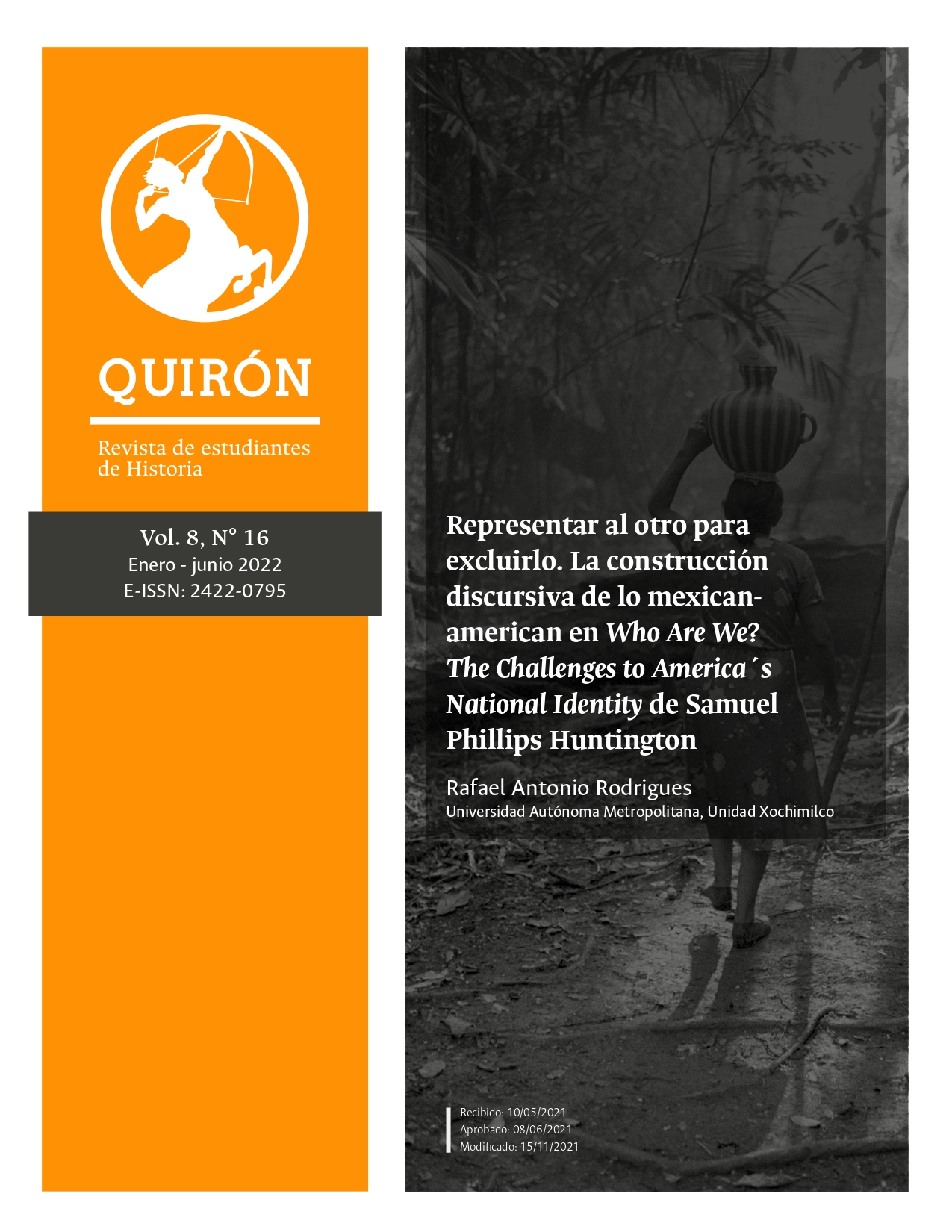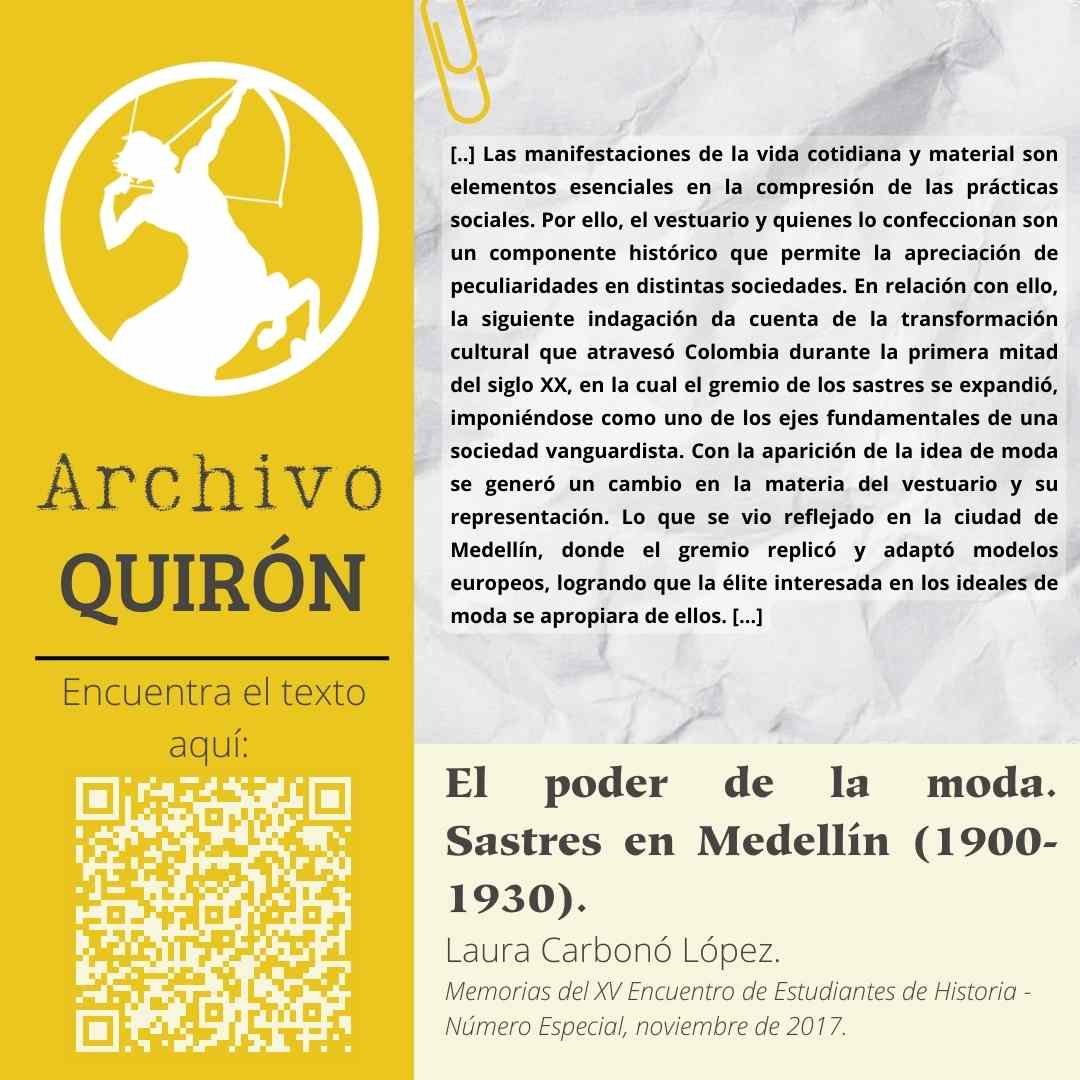Represent the other to exclude him. The discursive construction of the Mexican-american in Who Are We? The Challenges to America’s National Identity by Samuel Phillips Huntington
Keywords:
mexican-american, national identity, language, culture, raceAbstract
The following article reflects on the ways in which Mexican-Americans are (re) presented in Who Are We? The challenges to America’s National Identity by Samuel Huntington. The American nation appears as an ontological and colorless (not white) category, beyond linguistic mediations and racial formations, that gains meaning through the binary and essentialist construction of Mexican-Americans as their racialized antipodes. Consequently, Mexican-Americans are incorporated into nationalist rhetoric only to be excluded again from the national vocabulary. Thus, an epistemic violence is engendered that hides both the discursive (political) production of the Mexican-Americans and their own participation in the dichotomous game that legitimizes the image, allegedly deracialized, of what is conceived as the “authentic (white) American”.
References
Bets, Richard K. “Samuel P. Huntington”, Britannica https://www.britannica.com/biography/ Samuel-P-Huntington.
Clastres, Pierre. La Sociedad contra el Estado. La Plata: Terramar, 2009.
Castro-Gómez, Santiago y Eduardo Mendieta, eds. Teorías sin disciplina (Latinoamericanismo, poscolonialidad y globalización en debate). Ciudad de México: Miguel Ángel Porrúa, 1998.
Elenes, Alejandra. “Border/Transformative Pedagogies at the end of the millennium: Chicana/o Cultural Studies and Education”. Decolonial Voices: Chicana and Chicano cultural studies in the 21st Century. Arturo J. Aldama and Naomi H. Quiñonez. Indiana: Indiana University Press, 2002.
Hall, Stuart. Essential Essays. Vol. 2. Durham: Duke University Press, 2019.
History.com Editors. “Hispanics are officially declared the largest minority group in the U.S.”, History, 22 de enero de 2003, https://www.history.com/this-day-in-history/censushispanics-declared-largest-minority-group-in-us
Huntington, Samuel P. Who are we? The Challenges to America´s National Identity. New York: Simon & Schuster, 2004.
Noe-Bustamante, Luis, Mark Hugo López y Jens Manuel Krogstad. “U.S. Hispanic population surpassed 60 million in 2019, but growth has slowed”. Pew Research Center, 07 de julio de 2020. https://www.pewresearch.org/fact-tank/2020/07/07/u-s-hispanic-populationsurpassed-60-million-in-2019-but-growth-has-slowed/
Restrepo, Eduardo. “Imaginar el fin del desarrollo sin las garantías de radicales otredades”. Convergencias y Divergencias: Hacia educaciones y desarrollos “otros”, editado por Tatiana Gutiérrez y Andrea Neira. Bogotá: Corporación Universitaria Minuto de Dios, Centro de Educación para el Desarrollo, 2017.
Theiss-Morse, Elizabeth. Who counts as an American? The boundaries of National Identity. Cambridge: Cambridge University Press, 2009.

Published
Issue
Section

This work is licensed under a Creative Commons Attribution-NonCommercial-NoDerivatives 4.0 International License.







